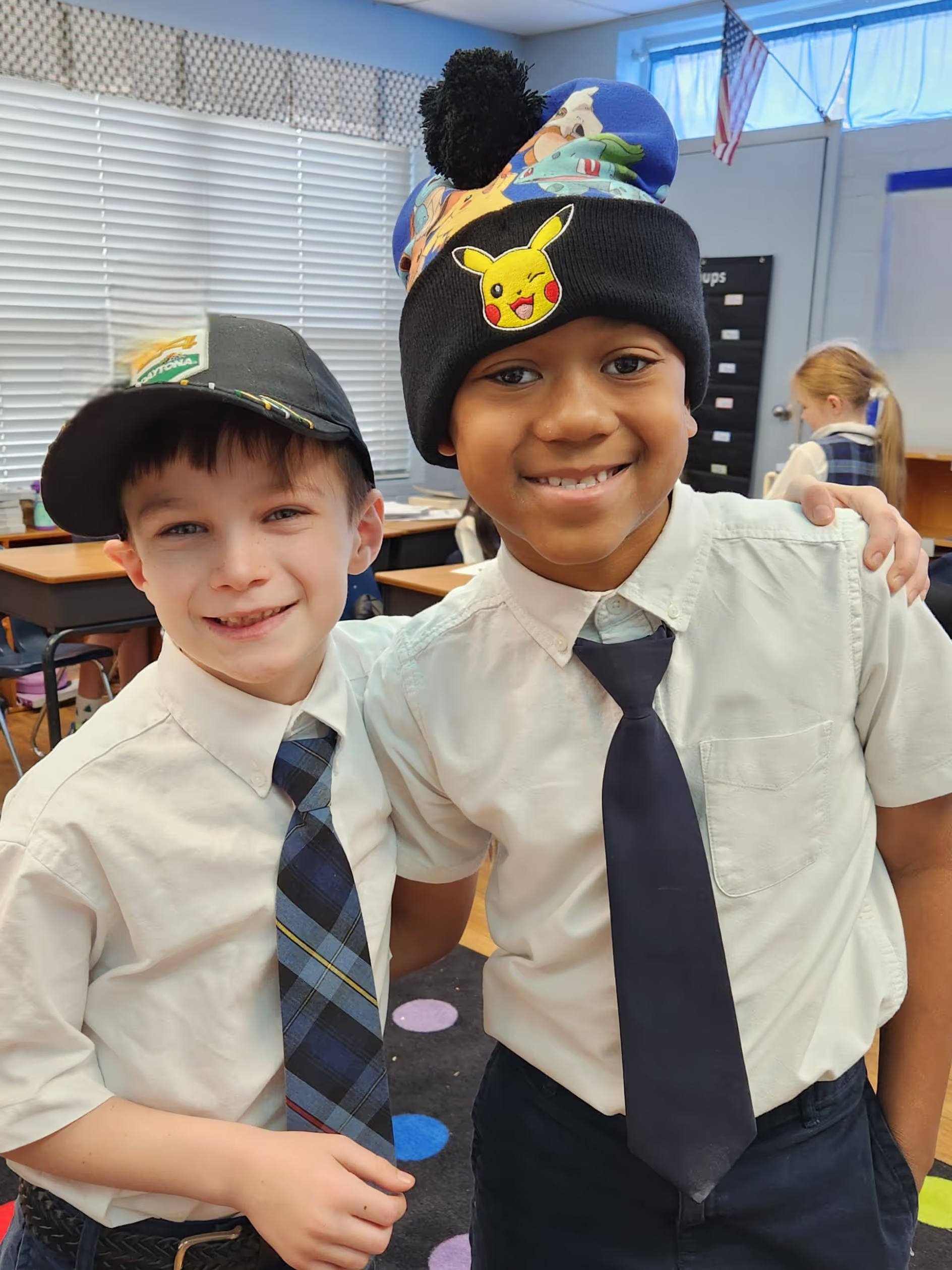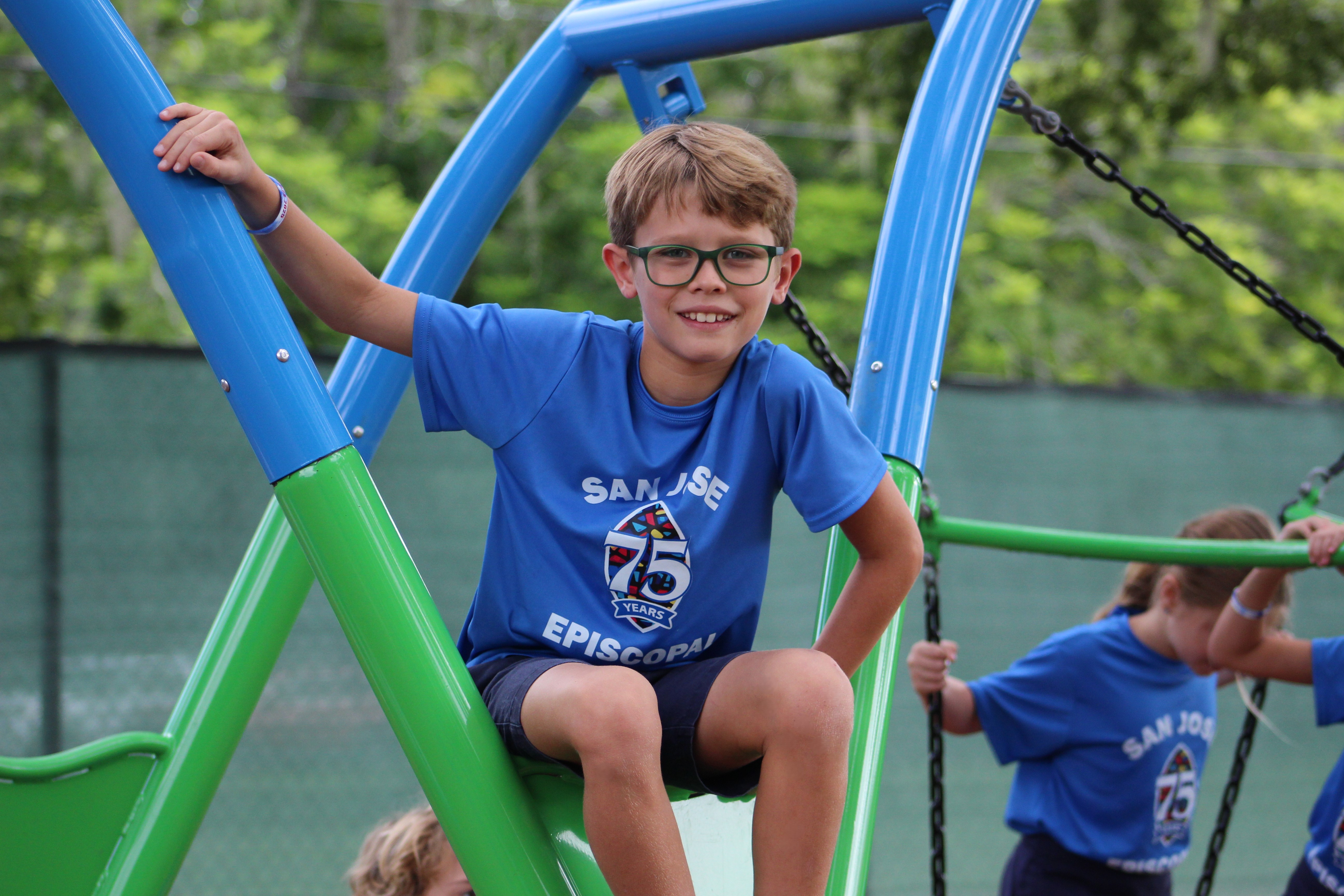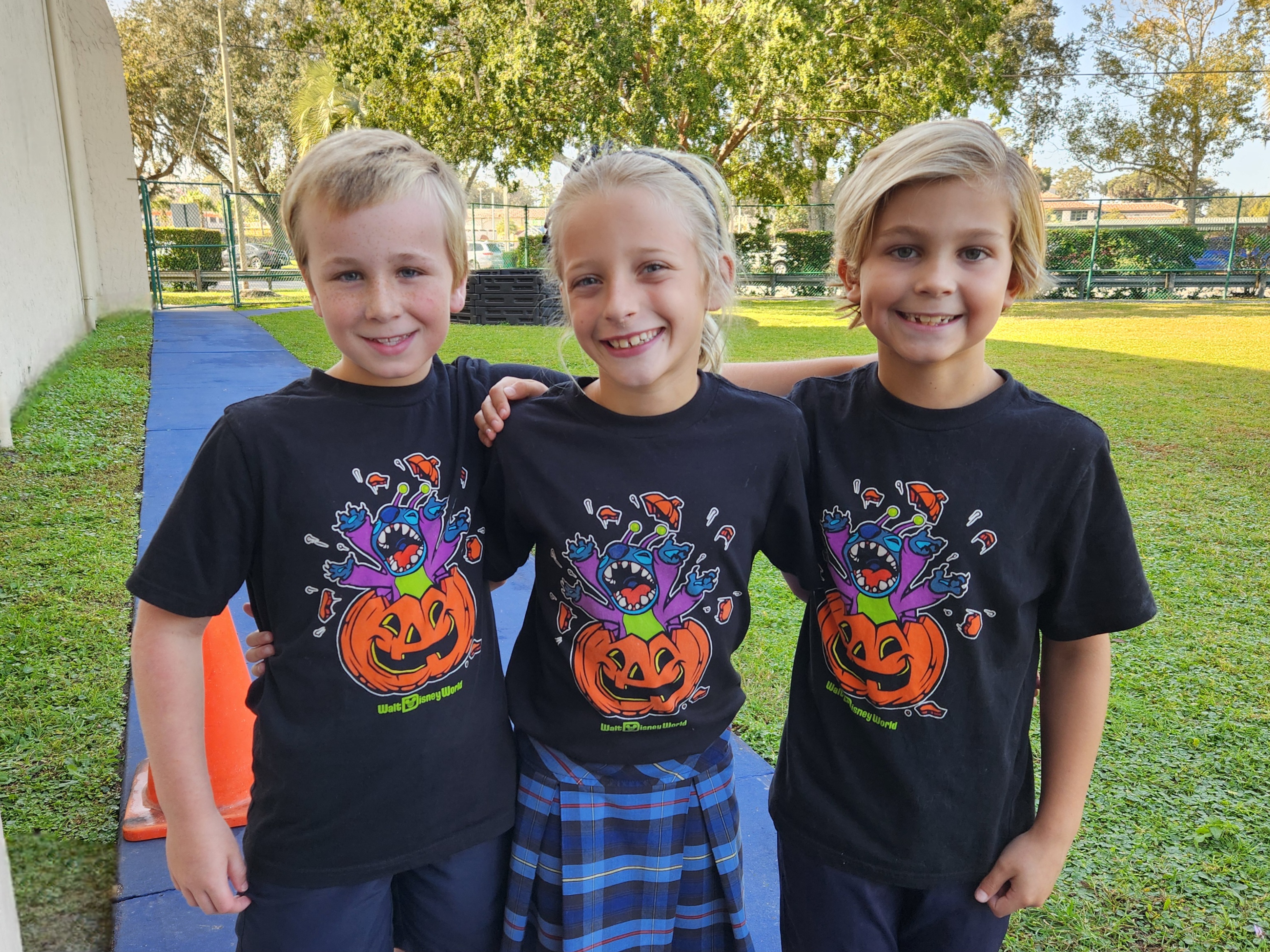
Third Grade Curriculum
Third grade is a transformative year for our students as they prepare to transition from Lower School to Upper School. Daily whole-class and small-group instruction helps them sharpen decoding and encoding skills, tackling Greek and Latin roots and affixes to move beyond phonics into deeper word study. In guided reading groups, they refine accuracy and fluency while exploring a wide variety of genres and text structures. Whole-class, small-group, and partner discussions build confidence in analyzing character development, interpreting themes, and identifying the author’s perspective and purpose. With modeling and scaffolding, students also learn to summarize key ideas, evaluate claims, and compare how different authors present similar content or themes.”
As writers, our students are gaining stamina, learning how to connect ideas using paragraph structure, and employing the conventions of writing to ensure clarity, conciseness, and coherence. They write daily across genres, crafting imaginative narratives with vivid detail and dialogue, and composing opinion pieces and expository essays that are rich with evidence, transitions, and clear conclusions. Students learn to plan, revise, and edit their work with support, using digital tools to enhance both the process and the final product. They also develop fluent cursive handwriting and a deepening command of grammar, punctuation, and spelling, empowering them to communicate effectively in all subject areas.
Authentic, cross-curricular projects bring reading and writing to life in meaningful ways. Whether conducting research on the Right Whale in science, composing poetry inspired by the rhythm and improvisation of jazz music, or creating multimedia presentations on the U.S. President or First Lady of their choice, third graders use language as a powerful tool for thinking, creating, and connecting. Their work is purposeful and collaborative, often shared through oral presentations that incorporate strong vocabulary, nonverbal cues, and multimedia elements. Through these dynamic learning encounters, our third graders grow into confident, critical thinkers and capable communicators, who are ready for the challenges that lie ahead in our Upper School.
Skills & Understandings:
- Decode unfamiliar words using grade-level phonics, word analysis, Greek and Latin roots, affixes, and context clues
- Read grade-level texts fluently and expressively with accuracy and automaticity
- Analyze character development, perspectives, and themes in literary texts
- Identify and explain types of poems including free verse, rhymed verse, haiku, and limerick
- Summarize literary and informational texts, including key details, themes, and central ideas
- Identify and explain the use of metaphors, personification, and hyperbole in texts
- Explain how text features and structures (chronology, comparison, cause/effect) support meaning
- Determine an author’s purpose or claim and explain how it is developed with evidence
- Compare and contrast how different authors present the same topic or theme
- Conduct short research projects using information from multiple sources to answer a question
- Write legibly in cursive using upper and lowercase letters
- Compose narratives with logical sequences, descriptive details, dialogue, transitions, and conclusions
- Write opinion and expository pieces supported by facts, details, transitions, and conclusions
- Plan, revise, and edit writing with guidance, using digital tools and peer/adult feedback
- Present ideas orally using appropriate volume, clear pronunciation, nonverbal cues, and multimedia enhancements
In third grade, students build on the strong foundation developed in second grade and experience a year of meaningful mathematical growth. They move from working with three-digit numbers to confidently understanding and manipulating four-digit numbers, strengthening their number sense and place value knowledge. Addition and subtraction become more complex as students solve multi-step problems with larger numbers and begin to explain their mathematical thinking with clarity. They build on their early exposure to multiplication by developing strategies for both multiplication and division, setting the stage for future fluency. Third graders also extend their understanding of measurement as they explore area and perimeter, solve real-world problems involving time and money, and begin to read and create more sophisticated data displays. Their understanding of geometry grows as they identify and analyze shapes, work with angles, and explore lines of symmetry. Fractions become a more prominent part of their learning, moving beyond simple recognition to comparing, representing, and reasoning about fractional parts. Throughout the year, students discover that math is not just about getting the right answer—it’s about understanding, explaining, and seeing the connections that bring numbers and patterns to life.
Skills & Understandings:
- Understand the place value of four-digit numbers
- Add and subtract multi-digit whole numbers. Build an understanding of multiplication and division operations
- Solve multiplication and division problems
- Develop an understanding of equality, multiplication, and division
- Identify numerical patterns, including multiplicative patterns
- Measure attributes of objects and solve problems involving measurement
- Tell and write the time, and solve problems involving time
- Order and compare fractions and identify equivalent fractions
- Describe and identify relationships between lines and classify quadrilaterals
- Solve problems involving the perimeter and area of rectangles
- Collect, represent, and interpret numerical and categorical data
In third grade, The Connell Family Wonder Lab—affectionately called The Wonder Lab—propels students into deeper scientific discovery, weaving together the Next Generation Science Standards (NGSS), Florida’s CPALMS benchmarks, and the full spectrum of ISTE standards. Learners become empowered investigators as they design and build their own thermometers, anemometers, and rain gauges to monitor local weather, then analyze the data with digital graphing tools to spot patterns and forecast conditions. Acting as knowledge constructors and creative communicators, students script and share “on‑location” weather reports, blending multimedia storytelling with evidence-based claims about climate around the globe.
Life-science units challenge students to examine inherited traits, adaptations, and endangered species—such as the North Atlantic Right Whale—through a dynamic, cross-curricular unit of inquiry that integrates language arts. Students explore the environmental and human impact on these creatures, read related texts, and conduct research connecting science, writing, and advocacy. This integrated study comes to life during a visit to the North Atlantic Right Whale Festival in Fernandina Beach, Florida, providing a meaningful, real-world context for their learning and opportunities to interact with experts and conservationists.
In physical science, students investigate pushes, pulls, friction, and gravity, modeling balanced and unbalanced forces, testing variables, and refining prototypes such as tornado shelters or lightning-rod systems. They think computationally to compare design strengths and weaknesses. Earth-science investigations expand to landforms and erosion, solar energy, and the relationships between weather, climate, and extreme events—topics that inspire innovative design challenges and real-world problem solving.
Throughout every unit in The Wonder Lab, students ask their own questions, gather and analyze evidence, iterate on solutions, and share findings with authentic audiences, emerging as confident engineers, computational thinkers, and collaborative innovators poised to tackle the complex challenges of their world.
Skills & Understandings:
- Ask scientific questions and investigate them independently and collaboratively, using observations and experiments to explore natural phenomena
- Use scientific terms precisely, understanding that words like “energy,” “model,” and “evidence” have special meanings in science
- Explore different forms of energy—including light, heat, sound, electrical, and mechanical—and recognize how energy moves and transforms
- Investigate forces and motion, studying how balanced or unbalanced pushes, pulls, and magnetic interactions affect the movement of objects
- Define and solve simple design problems using scientific principles—such as choosing materials that work best with magnets or light
- Compare materials and describe their properties—like hardness, texture, color, and how they respond to heat or light
- Model and explain changes of state, such as melting, freezing, evaporation, and condensation of water
- Develop models of Earth’s land and water features, and explore how wind, water, and weather shape the landscape
- Recognize that the Sun is the closest star, appears large and bright, and is a major source of energy for Earth
- Study life cycles and inherited traits, from birth to death, and observe how offspring resemble their parents while showing variation
- Use evidence to explain how animal behaviors and group living help them survive in their environments
In third grade social studies, students engage in rich, purposeful learning that challenges them to think critically, make connections, and deepen their understanding of the world around them. Using technology and primary and secondary sources, students investigate history and geography with the curiosity and skill of young scholars. They learn to interpret thematic maps, graphs, and photographs while mastering map elements like coordinate grids, legends, and scale. Their geographic awareness expands as they label continents, oceans, and countries in North America and the Caribbean, explore different types of maps, and compare maps to globes to understand scale and distortion. Students examine the physical and human features of the United States, Canada, Mexico, and the Caribbean, including landmarks, climate, vegetation, and natural resources, making clear connections between geography and how people live. Third grade concludes with a study of the city of Jacksonville and its people. Students enjoy a hands-on visit, exploring historic landmarks that have shaped the city.
Third graders also begin building economic literacy, learning how scarcity drives trade, the role of money, and the differences between currencies. In civics, they gain a foundational understanding of the U.S. Constitution, the responsibilities of citizenship, and the structure of government at the local, state, and national levels. Along the way, they examine the significance of national and state symbols, holidays, and influential figures. This comprehensive and rigorous program equips students with essential knowledge and critical thinking skills that will serve them throughout their academic journeys and beyond.
Skills & Understandings:
- Use books, technology, and other resources to find and analyze information about history and important people
- Learn how to read and understand maps, charts, graphs, and photographs to explore places and ideas
- Use map tools like the compass rose, grid lines, scale, and legends to find and describe locations
- Identify continents, oceans, and countries in North America and the Caribbean on maps and globes
- Locate and name the five regions of the United States and the states that belong to each one
- Explore the landforms, landmarks, and natural features of the U.S., Canada, Mexico, and the Caribbean
- Learn about weather, plant life, and natural resources in different areas of North America
- Discover how geography and the environment affect the way people live in various places
- Explore how people feel connected to places through stories, songs, art, and cultural traditions
- Learn about the cultural groups that live in North America and how their customs and lifestyles are similar or different
- Understand the basic ideas in the U.S. Constitution and how it gives power to the people
- Learn about the roles of local, state, and national governments and how they help our communities
- Discover the importance of being a good citizen through voting, helping others, and showing respect for our country
Schedule a Tour
Come see for yourself why SJEDS is an investment in a brighter future.







-min.JPG)
-min.JPG)
-min.JPG)
